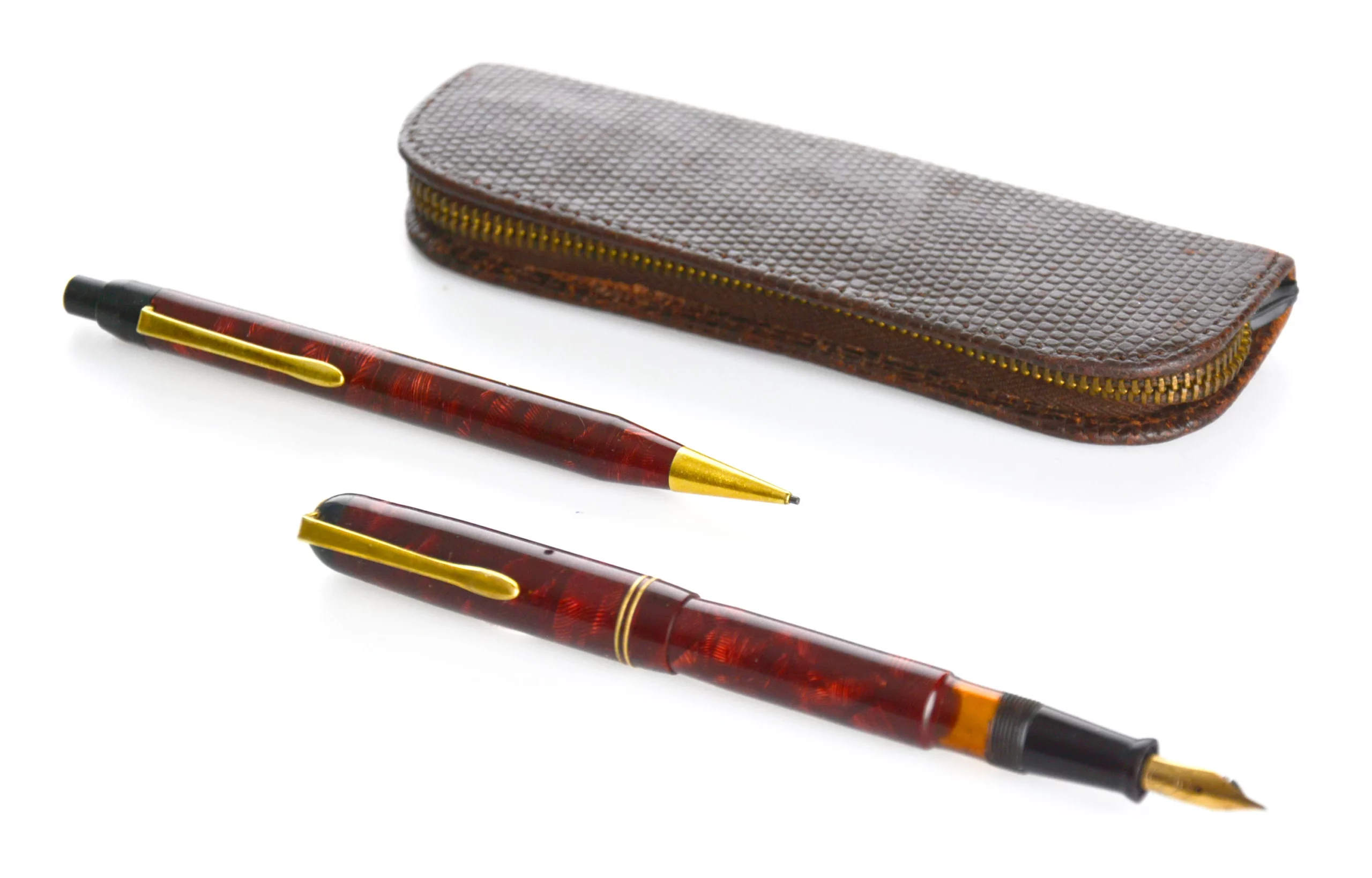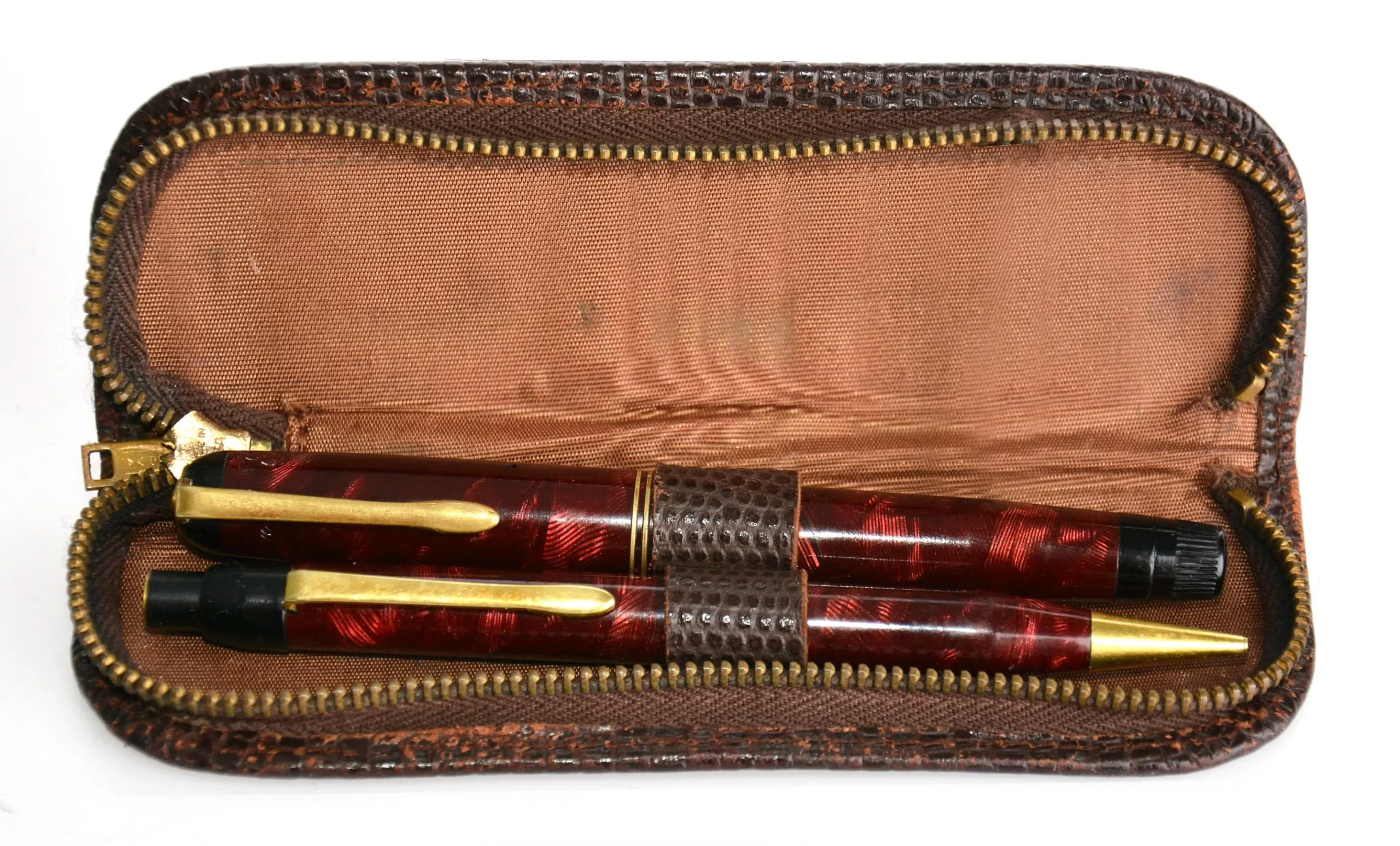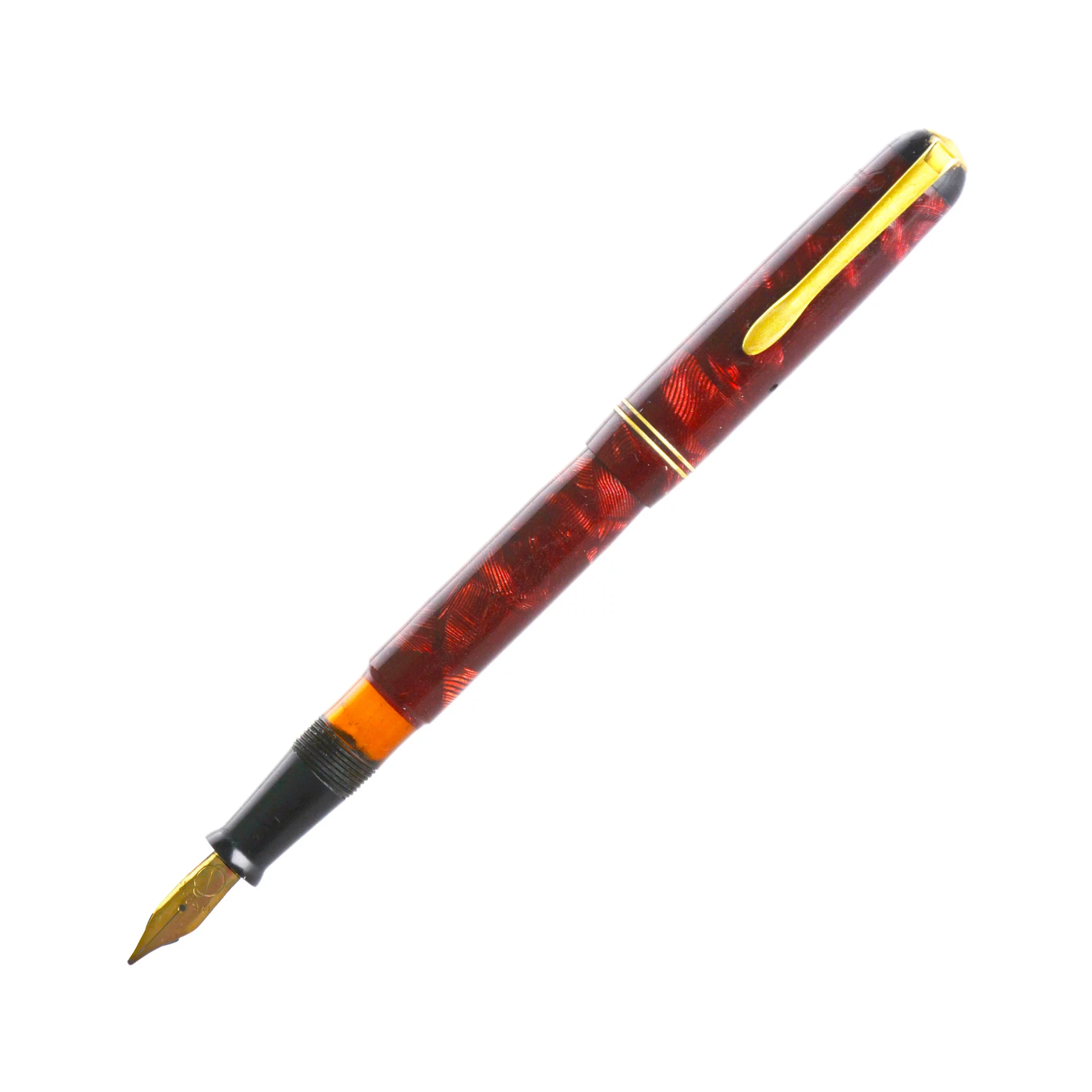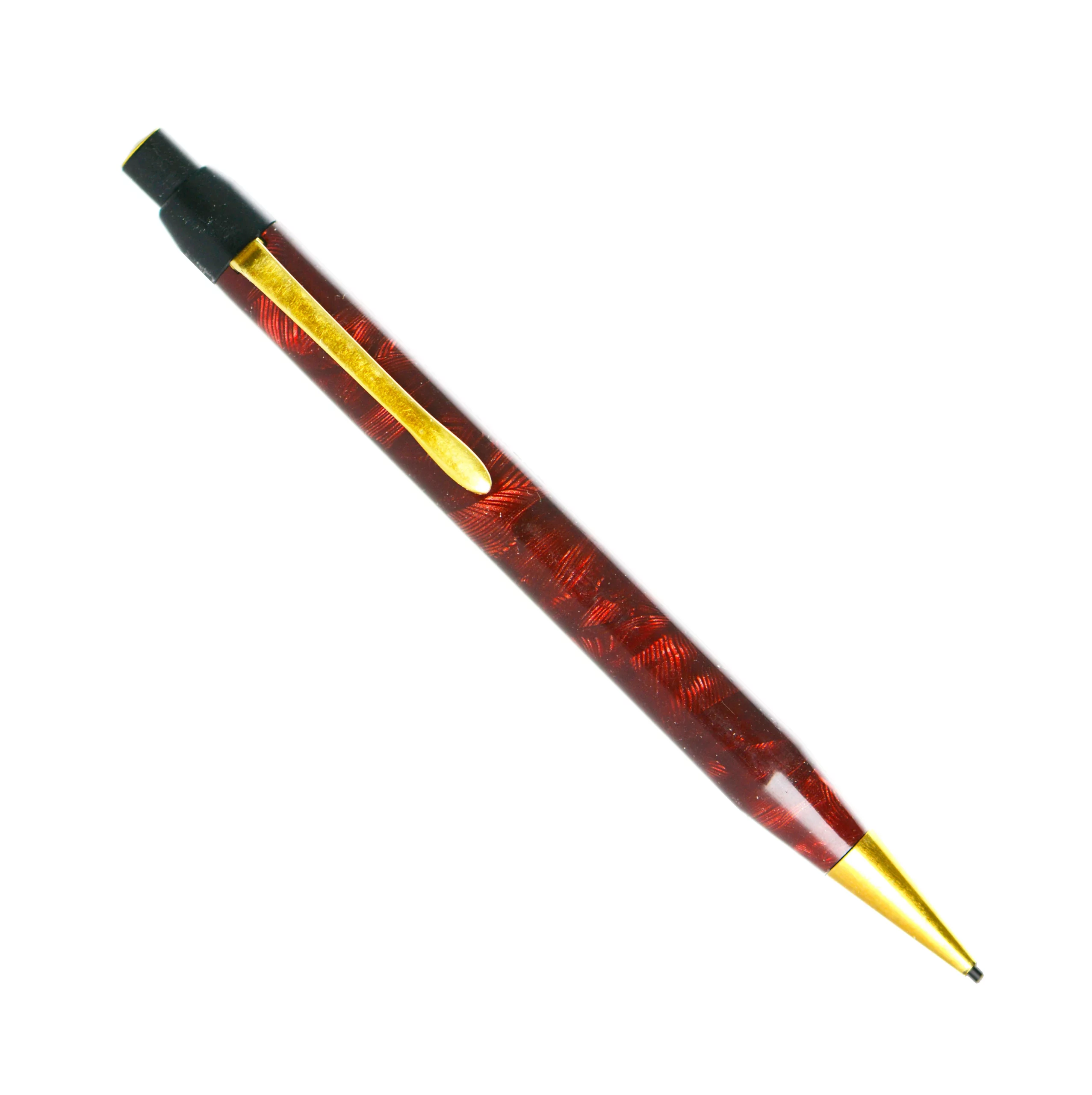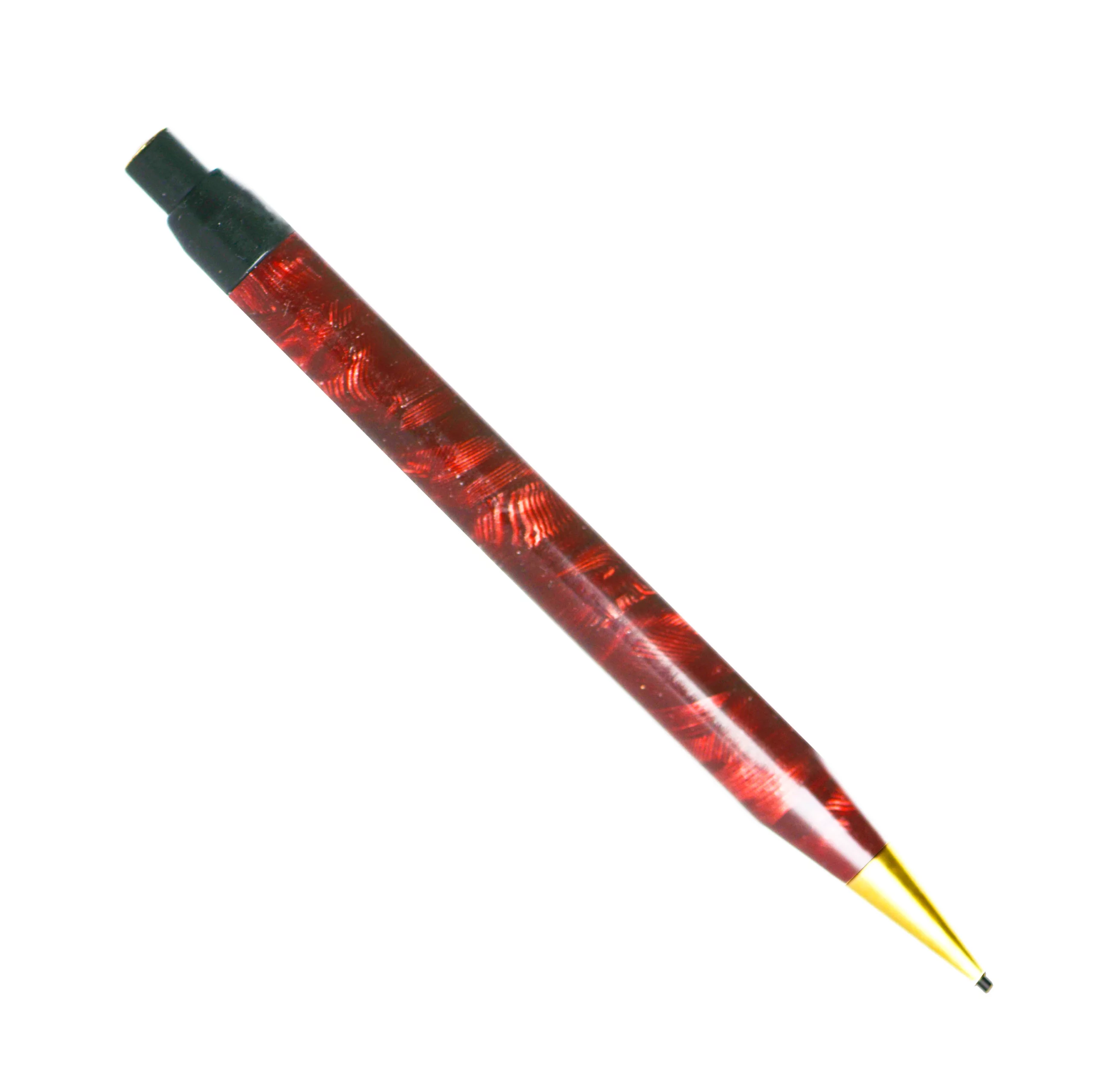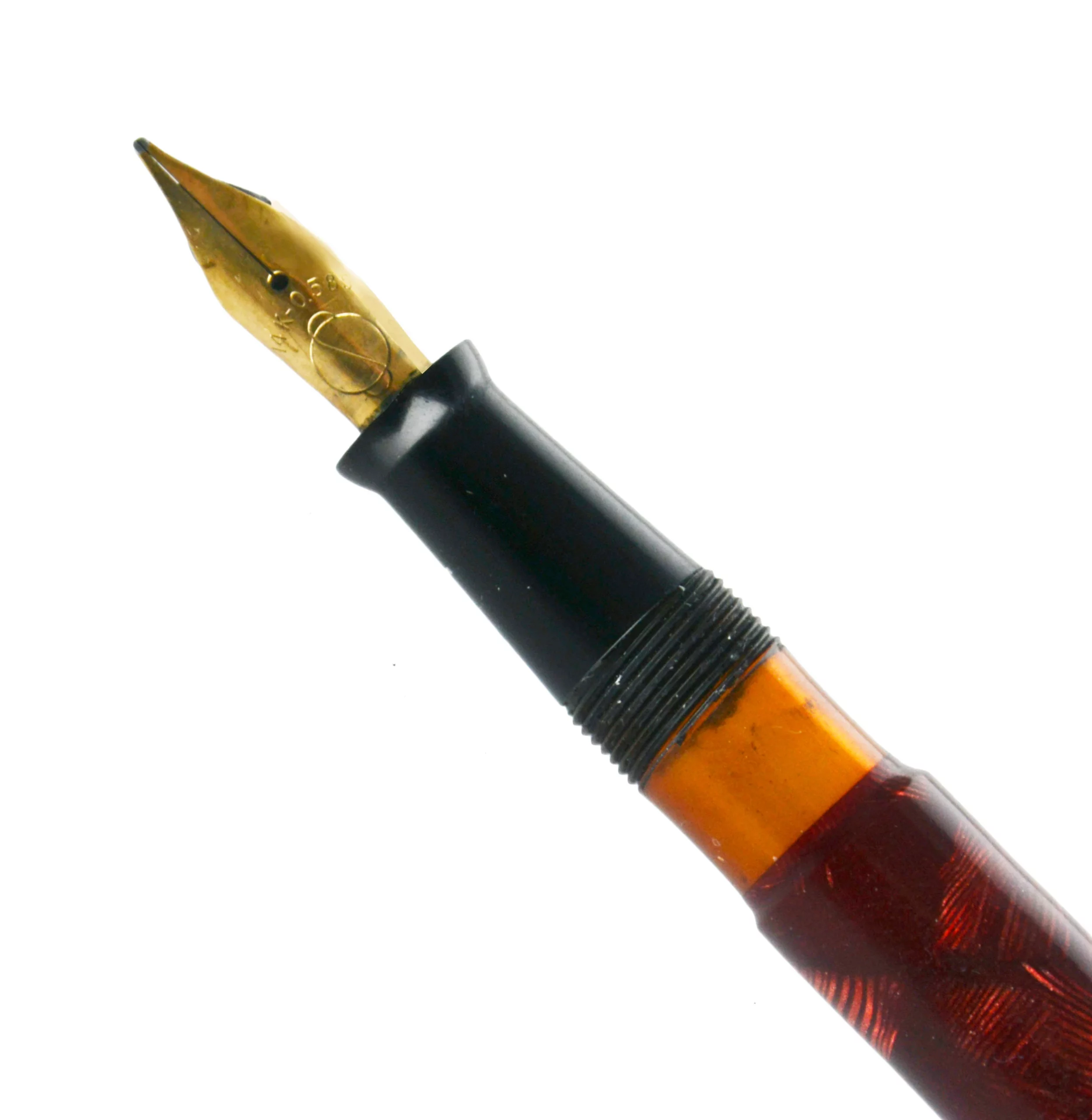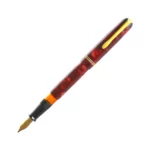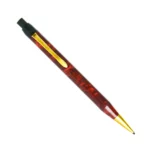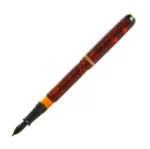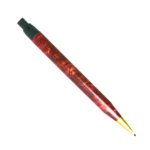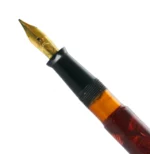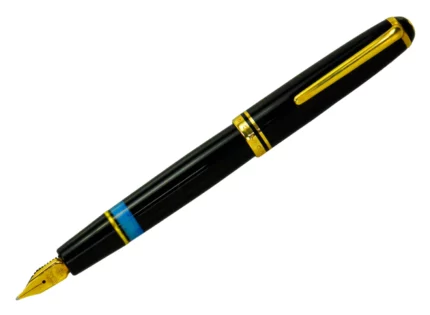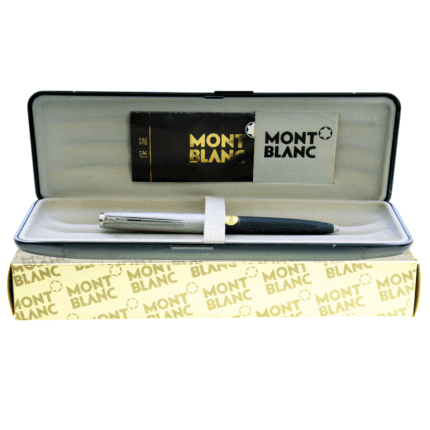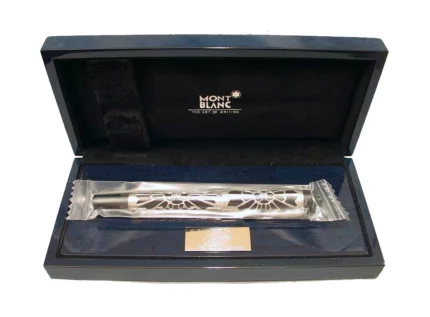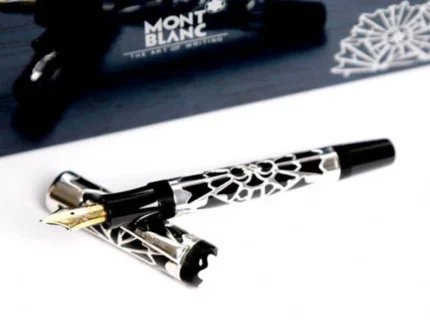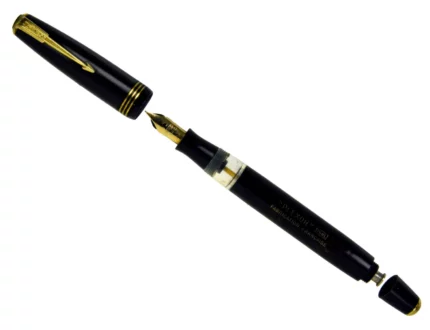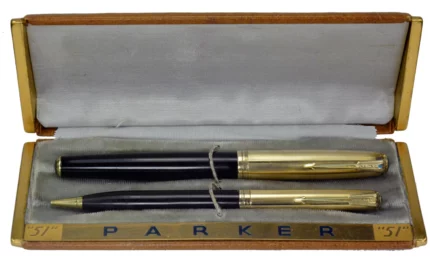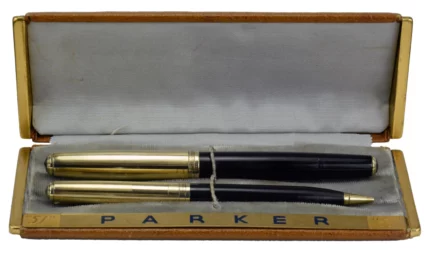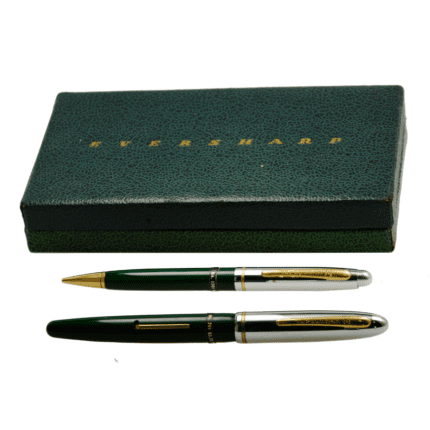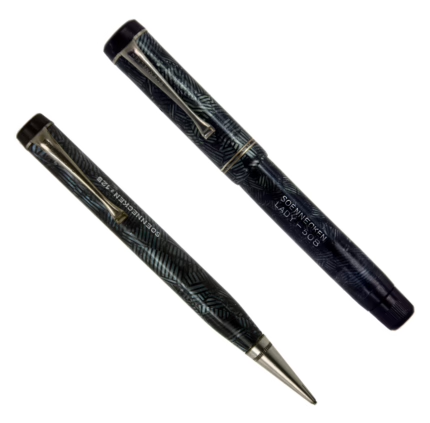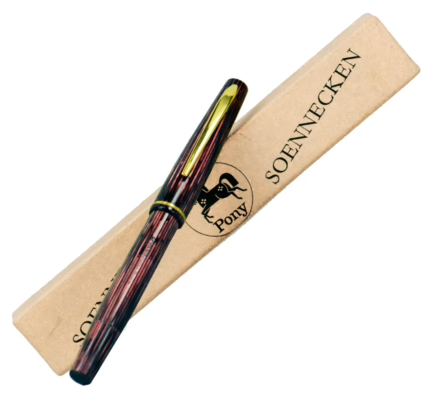Beautiful and Exceedingly Rare ** Ruby Web Soennecken 110 – 125 Fountain Pen and Self-propelling Pencil Set, Germany 1950s **
This is a perfectly kept 1950s Soennecken piston filler fountain pen, crafted in exquisite Ruby Web Striped celluloid, with 14K solid gold nib, plus golden pocket clip and trim… Complete with identically matching Soennecken 125 Mechanical-pencil.
Soennecken model 110 fountain pens as well as model 125 mechanical pencils were produced by Soennecken in Germany but sold exclusively in the Swiss market. They were among the last writing instruments crafted by Sonnecken in true celluloid; and Ruby Web is widely considered by collectors to be the most desirable variant.
- Nib: Medium point. Extra-flexible, which allows enhanced personal expression in handwriting.
- Pen Overall Length: 12 cm – 4 3/4″ (pen closed)… 15 cm – 4 7/8″ (pen with cap posted).
- Pencil Overall Length: 12.5 cm – 5″… Takes readily available size 1.1 mm leads.
- Condition: Excellent. Serviced and fully tested. Crisp clear brand imprint. No engraving, no cracks nor any other damage.
Shipping Worldwide via Courrier Service. Duty-free shipping within Europe.
Payment: If you prefer to pay by bank transfer or lay-away, please send us a message. Likewise, if check-out proves unable to process your credit card.
Soennecken Pen Company history
In the U.S. the familiar names are Parker, Sheaffer and Waterman. In Germany and Europe an equally famous and prestigious name in the history of writing and pens is Soennecken.
Tracing its roots to the writing society founded by Friedrich Soennecken in 1868 to disseminate the “Rundschrift” (round) writing system he’d developed by the age of 20. This penmanship showed a radical departure from the distinctly Germanic Fraktur style which predominated at the time, eschewing instead the Antiqua style created by the “godless humanist movement” in Italy
Soennecken’s accomplishments in that period include designing the perfect steel nibs for his writing style… At one time, the nibs of choice used by Friederich Nietzsche and Franz Kafka.
In 1875 he founded The Soennecken Pen Company, Bonn, German and began his own production of nibs, inkwells and various exercise books about his new penmanship method. The firm prospered, and by 1883 a new three-story building was constructed, housing some 40 employees. Soennecken also soon went on to invent the ring binder and hole puncher, as well as setting up a company department for the manufacture of office furniture.
By 1890, one of the most important articles offered within Soennecken’s product range of some 150 items was the first-ever German fountain pen, a hard rubber eyedropper filler. Succeeding versions were produced over the years; and in 1905 Soennecken also went on to introduce his first safety pen. By then, the Company’s pen range consisted of some 30 models, safety pens as well as eyedropper fillers, in various sizes and based on different technical solutions that included overfeeds, alternatively underfeeds, to conduct ink from the pen’s reservoir to the nib.
Following Friedrichs death in 1919, his son Alfred headed-up the firm. He succeeded to maintain operations despite the currency depreciation and material shortages which marked post WWI Germany.
Starting in 1927, Soennecken also briefly produced lever fillers, eventually discarding the system in favour of the more successful button fillers introduced in 1931.
Also by this time, Soennecken’s main competitors had become the Simplo Filler Pen Company (later renamed Montblanc), Pelikan and Parker-Osmia who had began strongly promoting their Duofold range.
World War II went on to annihilate the combined work of two Soennecken generations, as both factories in Bonn were completely destroyed. However, in 1945, Alfred, and a third generation Alfred Jr. gathered some of their old staff and production was relaunched, finally ceasing in 1967.


